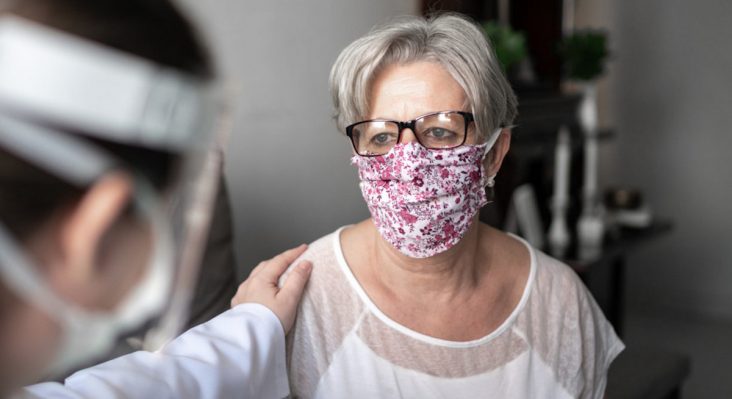UAMS modeling shows fewer long-term cases, but state still seeing ‘significant growth’
by September 29, 2020 5:47 pm 610 views

Updated COVID-19 modeling from the University of Arkansas for Medical Sciences shows a possible long-term reduction in cases, and also provides survey results indicating that most Arkansans wear masks but a majority do not support the opening of schools.
The update, posted Tuesday (Sept. 29), notes that mid-term modeling predicts 124,054 known cumulative cases and 2,501 deaths by Nov. 15.
While the overall modeling shows fewer numbers in most metrics compared to previous reports, the UAMS modeling authors say the numbers are still moving in the wrong direction.
“There is still significant growth in the numbers of COVID-19 cases, hospitalizations, and deaths. A plausible reason for this outcome is that some significant portions of the community do not see themselves at high risk of infections and are behaving accordingly. … Even though adults 18 to 60 may be at lower risk of death than those over 70, there is still significant risk. Furthermore, a disease with a fairly high risk of hospitalization is extremely serious, and, given the possible long-term consequences of COVID-19 infection, should not be taken lightly,” according to the report.
The mean-case (moderate) estimate was moved from Dec. 23 to Feb. 22, with active cases – “unresolved infection at a given point in time” – dropping from 83,805 to 58,384. The worst-case estimate was moved from Dec. 14 to Feb. 10, with active cases declining from 122,267 to 88,408. Following are the new UAMS mean- and worst-case estimates.
• Mean-case estimates
Feb. 22
Active cases: 58,384
Hospitalizations: 1,401
ICU beds: 490
Ventilators: 171
• Worst-case estimates
Feb. 10
Active cases: 88,408
Hospitalizations: 2,121
ICU beds: 742
Ventilators: 259
“What this is suggesting is, since the number of people susceptible to infection remains the same, COVID-19 will spread more slowly through the the pool of susceptible Arkansans. We can picture this as a forest fire, where the rate of burn is relatively constant as the fire moves through a forest. However, there will be occasional flare-ups, as the fire occasionally reaches more combustible material in a certain area,” noted the UAMS report.
Gov. Asa Hutchinson, who has been critical of previous UAMS modeling reports, said recent changes show the state moving in the right direction and that Arkansans are doing a better job of following health guidelines.
The report also included results from a recent survey UAMS conducted in the state’s five health regions. Following are key results from the survey broken down by respondents by region.
Central region
Mask use is effective: 70%
Wears mask: 96%
Supports opening of schools: 37%
Northeast region
Mask use is effective: 57%
Wears mask: 86%
Supports opening of schools: 49%
Northwest region
Mask use is effective: 70%
Wears mask: 93%
Supports opening of schools: 44%
Southeast region
Mask use is effective: 60%
Wears mask: 92%
Supports opening of schools: 37%
Southwest region
Mask use is effective: 64%
Wears mask: 88%
Supports opening of schools: 44%
Link here for a PDF of the updated UAMS modeling.
